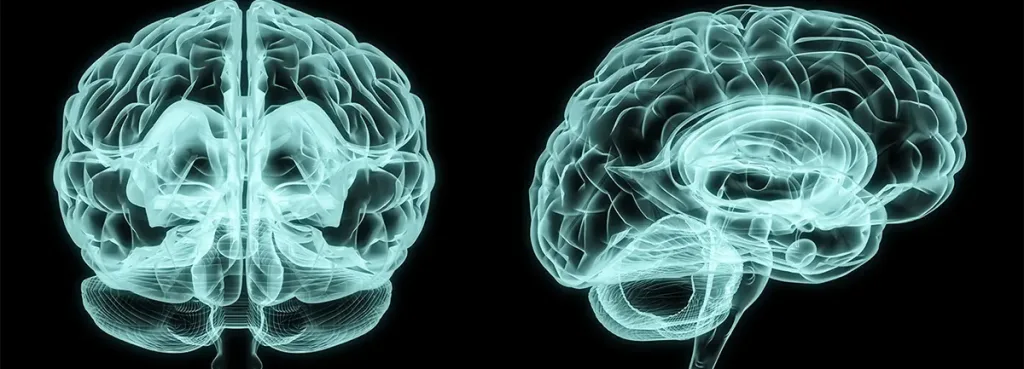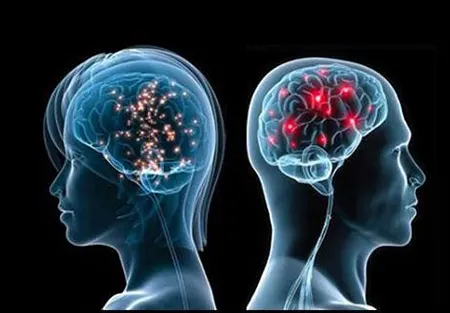Exploring Gender Brain Differences: Stanford’s 2024 Latest Research Breaks New Ground!

Introduction to Stanford’s 2024 latest research on gender brain differences.
A research paper published in February 2024 by scholars from Stanford University presents novel insights into the debate on gender differences in brain structure and function. This study suggests that artificial intelligence-generated brain scans indicate distinct neural wiring between males and females, potentially influencing cognitive abilities. However, opinions within the scientific community vary, with some cautioning against perpetuating a narrative focused on hunting for sex differences. This prompts the question: Is the quest to identify a ‘male’ and ‘female’ brain worthwhile, or is it ultimately futile? Delving into the topic invites readers to form their conclusions.
Stanford’s 2024 research on gender brain differences offers a nuanced understanding of the complexities surrounding this topic. By employing advanced neuroimaging techniques, the study provides valuable insights into the structural and functional variances in the brains of individuals based on gender. While the findings suggest the presence of distinct neural wiring between males and females, the diverging opinions within the scientific community highlight the need for critical examination and thoughtful interpretation of the data. Ultimately, this research prompts a deeper exploration of whether the pursuit of identifying gender-specific brain characteristics is a meaningful endeavor or merely perpetuates stereotypes.
What Are the Key Brain Differences Between Genders?
The study conducted by Stanford University in 2024 sheds light on these key differences:

1. Gray Matter Volume: In terms of gray matter volume, females tend to exhibit greater density in brain regions linked to emotional processing and social cognition. This suggests a potential biological basis for the often-noted differences in emotional expression and social interaction styles between genders. On the other hand, males show distinct gray matter distribution patterns, particularly in areas associated with spatial reasoning and motor skills.
This may contribute to observed variations in navigational abilities and physical coordination between males and females. These differences in gray matter volume underscore the intricate interplay between biology and behavior, shedding light on the multifaceted nature of gender brain differences. Understanding these nuances can lead to more informed discussions and approaches to promoting gender equality and inclusivity.
2. White Matter Connectivity: In the realm of white matter connectivity, males often showcase heightened connectivity in the white matter tracts associated with spatial navigation and motor coordination. This enhanced connectivity suggests a potential biological underpinning for the observed differences in spatial reasoning skills and physical dexterity between genders.
The intricate network of white matter fibers facilitates efficient communication between different brain regions, potentially influencing cognitive and motor functions. Understanding these gender-specific differences in white matter connectivity provides valuable insights into the underlying neural mechanisms contributing to behavioral disparities between males and females. Such knowledge can inform tailored approaches in education, healthcare, and beyond, promoting equitable opportunities and outcomes for individuals of all genders.
3. Hormonal Influence: In the study of hormonal influence on brain development, researchers delve into the timing of when hormonal fluctuations wield the most significant impact on brain maturation. This exploration aims to pinpoint critical periods during which hormonal changes shape neural circuitry and cognitive functions. Additionally, scientists investigate the specific brain regions that are most susceptible to the influence of hormonal shifts. Understanding the where aspect provides valuable insights into how hormones sculpt the architecture of the brain, potentially influencing various cognitive processes and behaviors.
Furthermore, the study scrutinizes the pivotal hormones involved in shaping brain development. By identifying and examining these key hormonal players, researchers aim to unravel the intricate interplay between endocrine signaling and neural plasticity. Insights into which hormones wield the greatest influence on brain structure and function can inform our understanding of gender-specific differences in cognition, behavior, and mental health. Ultimately, unraveling the complexities of hormonal influence on brain development holds promise for elucidating the biological underpinnings of gender differences and informing interventions aimed at promoting neurodevelopmental health and well-being.
Remember, individual variations exist, and gender differences should not be oversimplified.
What Cognitive Abilities Show Gender-specific Trends?
The research team meticulously analyzed cognitive performance across domains. Here’s what they discovered:
How Do Men and Women Differ in Spatial Navigation?
1. Strategies Employed:
Males: When it comes to navigation, males typically lean towards egocentric strategies. This means they mentally track their movements and rely on landmarks to navigate their surroundings. For example, envision a man navigating through a city by memorizing specific turns and landmarks along the way. This approach is more focused on the individual’s perspective and immediate surroundings, allowing for efficient navigation based on personal landmarks and spatial cues.
Females: On the other hand, females often prefer allocentric strategies for navigation. This involves creating a cognitive map of the environment and considering the relationships between landmarks, regardless of their position. Picture a woman using a mental map to navigate through a city, taking into account the spatial layout and connections between landmarks. This approach allows for a more holistic understanding of the environment, enabling individuals to navigate based on a broader perspective of spatial relationships rather than just personal landmarks.
2. Brain Activation Patterns:
Males: In terms of brain activation patterns, males often demonstrate heightened activity in regions associated with spatial perception and motor planning. These areas include the parietal cortex, responsible for processing spatial information, and the hippocampus, crucial for spatial memory formation. This suggests that males may excel in tasks requiring spatial navigation, such as map reading or assembling objects in space. The increased activation in these areas highlights the importance of spatial cognition in male brain function and behavior.
Females: Conversely, females exhibit stronger activation in brain regions linked to verbal memory and emotional processing. These regions include the prefrontal cortex, involved in executive functions and higher-order cognitive processing, and the limbic system, responsible for regulating emotions and memory. This suggests that females may have a predisposition towards tasks involving verbal fluency, memory recall, and emotional understanding. The heightened activation in these areas underscores the significance of emotional intelligence and verbal communication in female brain function and behavior.
Who Excels in Verbal Fluency?
In the realm of gender brain disparities, intriguing differences emerge in verbal fluency tests. These assessments unveil which gender excels in linguistic creativity, shedding light on the intricacies of cognitive abilities. Delving deeper, researchers investigate the neural circuits underlying this advantage, aiming to unravel the intricate interplay between brain structure and linguistic proficiency. Understanding who outperforms the other in verbal fluency provides valuable insights into the cognitive strengths and differences between genders.
By deciphering the underlying neural mechanisms, scientists strive to comprehend the complex interplay of factors influencing language processing and expression. These findings not only enrich our understanding of gender brain disparities but also pave the way for tailored approaches to education and communication.
How Does Socialization Impact Brain Wiring?
The study explored the role of socialization in shaping neural networks. Key questions emerged:
When Do Gender Stereotypes Emerge?
In the realm of gender brain research, scientists probe into the emergence of gender stereotypes to unravel key insights. They scrutinize when during development children internalize societal gender norms, shedding light on the early origins of gender identity formation. Furthermore, researchers delve into how these stereotypes influence brain connectivity, exploring the neural mechanisms underlying the processing and reinforcement of gendered expectations. Understanding the timeline of when gender stereotypes take root offers critical insights into the shaping of individual identities and behaviors.
By elucidating the impact on brain connectivity, scientists aim to decipher the complex interplay between societal influences and neural development. These investigations not only deepen our comprehension of gender brain dynamics but also inform strategies for mitigating the perpetuation of harmful stereotypes and promoting gender equity from an early age.
What Role Does Education Play?
In the exploration of the gender brain, researchers delve into the role of education to uncover crucial insights. They investigate which educational environments facilitate gender-specific brain adaptations, aiming to identify factors that shape cognitive development differently between sexes. Moreover, scientists strive to understand how to optimize learning experiences to cater to the diverse needs of both genders effectively.
By scrutinizing the impact of educational settings on brain function and behavior, researchers aim to design interventions and curricula that promote equitable learning outcomes for all. Understanding the interplay between education and the gender brain not only enhances our understanding of cognitive development but also informs evidence-based practices to foster inclusive learning environments. These efforts are essential for nurturing the diverse talents and potentials of individuals, irrespective of gender.
Conclusion:
In conclusion, the study of the gender brain is a multifaceted and dynamic field that continues to yield groundbreaking insights into the complexities of human cognition and behavior. Through meticulous research and advanced neuroimaging techniques, scholars have uncovered compelling evidence of structural and functional disparities between male and female brains. These findings challenge traditional notions of gender and underscore the importance of embracing diversity and inclusivity in our understanding of human biology.
Furthermore, the exploration of gender brain differences holds significant implications for various aspects of society, including education, healthcare, and workplace practices. By acknowledging and accommodating the diverse cognitive profiles of individuals, we can foster environments that promote equal opportunities and facilitate the realization of each person’s full potential. Moreover, understanding the nuances of gender brain dynamics can inform targeted interventions aimed at addressing disparities and promoting equity across genders.
As we continue to unravel the intricacies of the gender brain, it is essential to approach this subject with nuance, empathy, and a commitment to evidence-based practices. By embracing the complexities of human diversity and challenging societal norms, we can foster a more inclusive and equitable world where individuals are empowered to thrive, regardless of gender. Ultimately, the study of the gender brain catalyzes positive change, shaping our understanding of humanity and guiding us toward a more enlightened future.
FAQs:
What is the gender brain, and why is it significant?
The gender brain refers to the biological and neurological differences observed between male and female brains. Understanding these differences is significant as they shed light on various aspects of human cognition, behavior, and identity.
Do gender brain differences perpetuate stereotypes?
While gender brain differences exist, it’s crucial to recognize that they do not dictate individual capabilities or behaviors. Stereotypes arise from societal interpretations of these differences rather than inherent biological factors.
How do gender brain differences impact education and workplace practices?
Gender brain differences can influence learning styles, communication preferences, and problem-solving approaches. Recognizing and accommodating these differences can lead to more effective teaching methods and inclusive workplace policies.
Are gender brain differences immutable?
While some gender-brain differences may have biological underpinnings, they are not fixed or immutable. Environmental factors, societal expectations, and individual experiences also play significant roles in shaping brain development and function.
What are the ethical considerations surrounding gender brain research?
Ethical considerations in gender brain research include ensuring that findings are not used to perpetuate discrimination or reinforce gender stereotypes. Researchers must also prioritize informed consent and respect participants’ privacy and dignity throughout the research process.













